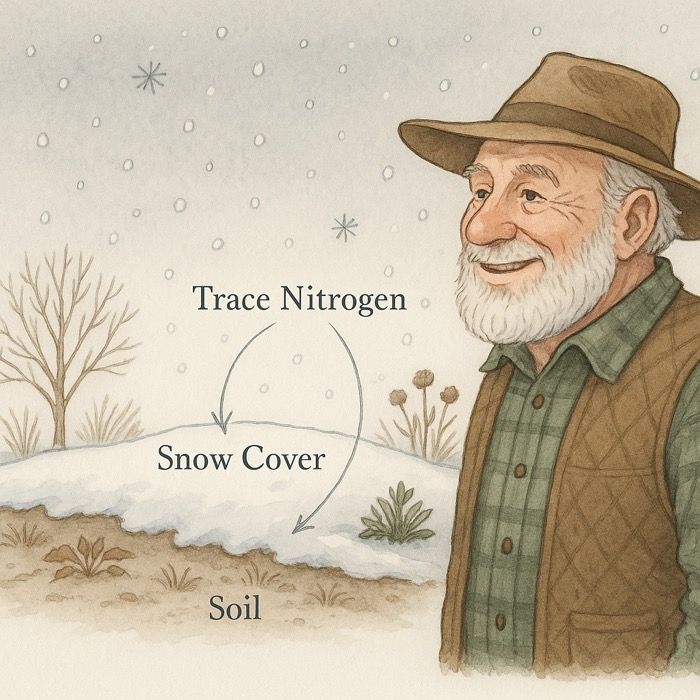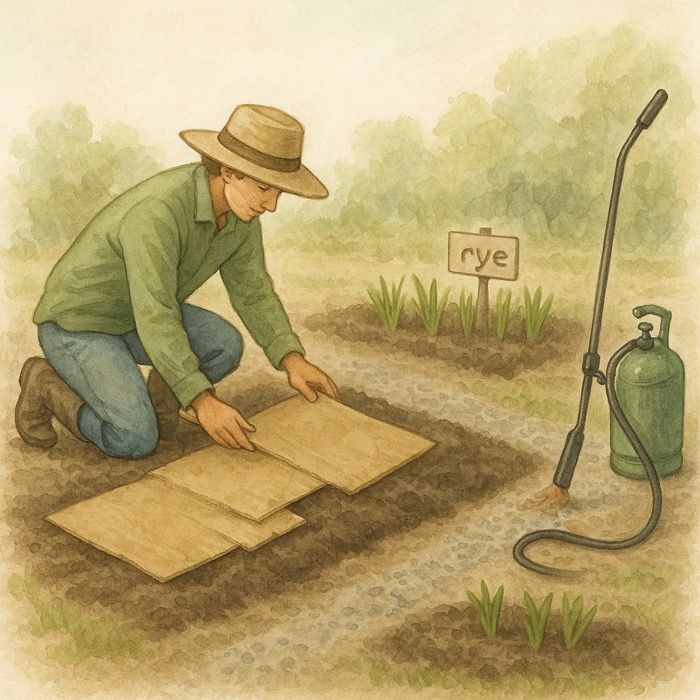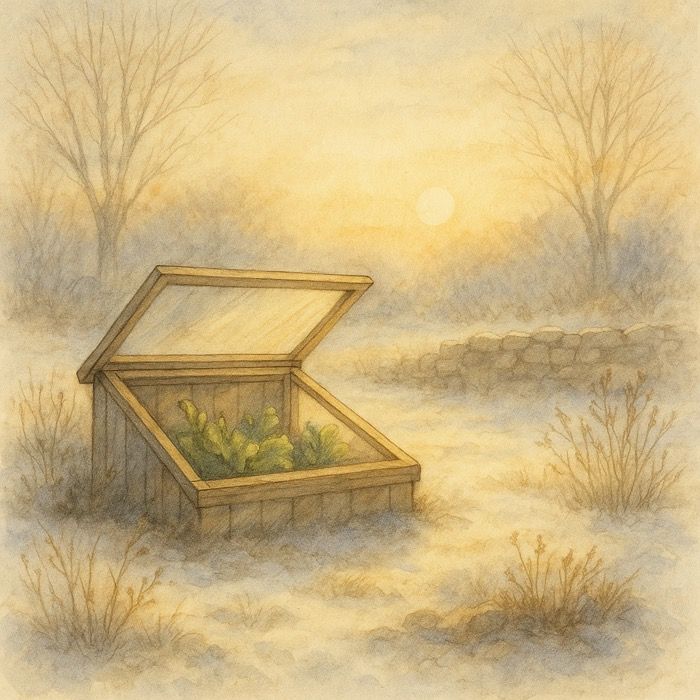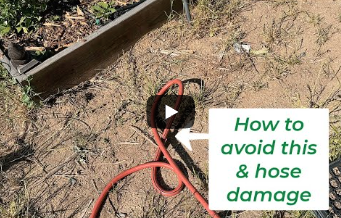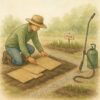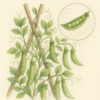The Benefits of Using Pine Needles for Mulch in Your Garden
Mulching is a critical practice for any gardener looking to maintain healthy and vibrant plants. One type of mulch that stands out for its unique advantages is pine needle mulch. Pine needles, also known as pine straw, offer a variety of benefits that can enhance the health of your garden while providing a natural and attractive appearance. In this blog post, we will explore the many benefits of using pine needles for mulch, how to properly apply them, and tips for maintaining your garden with this eco-friendly option.
Prefer a quick video? See our Can I use Pine Needles for Mulch? Video.
Debunking the Myths: Are Pine Needles Bad for Mulch?
There is a common misconception that pine needles are harmful to use as mulch due to their acidity. Some gardeners worry that using pine needles will lower the soil pH to a level that is detrimental to plants. However, this belief is largely unfounded. Let’s break down the chemistry behind pine needles and understand why they are not harmful as mulch.
1. Acidity Concerns
While it is true that fresh pine needles are slightly acidic, their impact on soil pH is minimal. The acidity of pine needles decreases significantly as they decompose. Research has shown that the effect of pine needles on soil pH is negligible and unlikely to harm your plants. Most garden soils have a buffering capacity that can neutralize any minor changes in pH.
2. Organic Matter and Soil Health
Pine needles add valuable organic matter to the soil as they break down. This process enriches the soil with essential nutrients and improves its structure, promoting better root growth and water retention. Far from being harmful, the decomposition of pine needles actually benefits soil health.
3. Misinterpretation of Symptoms
Some gardeners may attribute plant health issues to pine needle mulch without considering other factors. Poor plant health can result from various causes, such as improper watering, nutrient deficiencies, or pest infestations. Blaming pine needles alone oversimplifies the complex interactions within the garden ecosystem.
Master Gardener Tip: For an advanced planting approach, consider creating a layered mulch system by combining pine needles with other organic materials. Start by applying a base layer of compost or aged manure to enrich the soil with nutrients. Then, top this with a layer of pine needles. This technique provides the immediate benefits of compost and the long-lasting advantages of pine needles, such as weed suppression and moisture retention.
Why Use Pine Needles for Mulch?
1. Natural Weed Suppression
Pine needles create a dense mat that effectively suppresses weeds. By blocking sunlight from reaching the soil, pine needle mulch prevents weed seeds from germinating and growing, reducing the need for chemical herbicides or constant weeding.
2. Moisture Retention
One of the key benefits of mulching with pine needles is improved moisture retention. The needles allow water to penetrate the soil while reducing evaporation, keeping your plants hydrated for longer periods. This is especially beneficial during hot and dry weather conditions.
3. Soil Temperature Regulation
Pine needle mulch acts as an insulator for your soil. In the summer, it helps keep the soil cool, and in the winter, it provides a layer of warmth, protecting plant roots from extreme temperatures. This regulation helps create a more stable environment for plant growth.
4. Soil Enrichment
As pine needles decompose, they add organic matter to the soil, enhancing its fertility and structure. This slow decomposition process releases nutrients gradually, providing a steady supply of nourishment to your plants.
5. Acidic Soil Benefits
Pine needles are slightly acidic, which can benefit acid-loving plants like azaleas, rhododendrons, blueberries, and camellias. Using pine needles as mulch can help maintain the optimal pH level for these plants, promoting healthier growth and better flowering.
How to Apply Pine Needle Mulch
Applying pine needle mulch correctly is crucial for maximizing its benefits. Here’s a step-by-step guide:
1. Prepare the Area
Clear the area of any weeds and debris. If the soil is dry, water it thoroughly before applying the mulch.
2. Spread the Pine Needles
Evenly spread a layer of pine needles around your plants. Aim for a depth of 2 to 3 inches. Be careful not to pile the needles directly against the stems or trunks of plants to prevent moisture-related diseases.
3. Replenish as Needed
Pine needles decompose slowly but will eventually break down. Check your mulch periodically and replenish it as needed to maintain the desired depth.
Maintenance Tips for Pine Needle Mulch
- Monitor Soil pH: While pine needles are slightly acidic, they won’t significantly alter the soil pH. However, it’s good practice to test your soil’s pH regularly and adjust as necessary, especially if you notice any changes in plant health.
- Avoid Over-Mulching: Too much mulch can suffocate plant roots and lead to rot. Stick to the recommended 2 to 3 inches for best results.
- Keep Mulch Loose: Avoid compacting the pine needles. A loose layer allows for better air circulation and water penetration.
Conclusion
Pine needle mulch is a versatile and sustainable option for gardeners looking to improve their soil health and plant vitality. Its natural weed suppression, moisture retention, and soil enrichment properties make it an excellent choice for a wide range of plants. By following proper application and maintenance practices, you can enjoy the numerous benefits of pine needle mulch in your garden.
For more gardening tips and tricks, be sure to subscribe to our blog and stay updated with the latest in gardening trends and techniques. Happy gardening!
More From Our Master Gardener
Recent Posts

❄️ Snow as Fertilizer – The Truth About “Poor Man’s Nitrogen”

5 Unexpected Winter Weed Control Strategies (That Don’t Involve Mulch)

Harnessing Winter Sun – Passive Solar Tricks for Your Garden

How to Grow Spinach – The Ultimate Beginner’s Guide for Tender, Nutritious Leaves

How to Grow Peas: The Ultimate Beginner’s Guide for Sweet, Crisp Harvests



